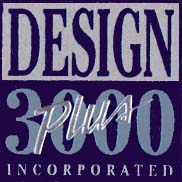 |
Click for Design 3000 Plus Sponsor Message |
| January
2000
Autobahn II takes 3000 beyond Web service Speedware pushes newest development suite as way to make 3000 more than Web data server Speedware’s Autobahn II software has a mission that company officials feel is important to the 3000’s future: to make the platform more than a data server to Web applications. The development suite launched in early 1996 has been through some serious changes in its latest version, adding features like wizards and an application mapper and the ability to work with a customer’s favorite Web design tool. Product marketing manager Bob Morrissette of Speedware said the product opens up the system’s Internet potential beyond delivering IMAGE records to waiting Web browsers. “There’s more potential to your 3000 than turning it into a database server,” Morrissette said. Batch processes can be launched directly on the HP 3000 using Autobahn II, to take order information and print an order form into the order processing department to packaging and shipping. Web-enabled applications can use the mail facilities of the 3000 to call mail functions directly from the system, to create e-mail. “From an application, we have access to operating system commands like a mail function — so you have access to other system functions on your 3000,” Morrissette said. These kinds of advantages let an IT department keep more of an application’s business logic hosted directly on an HP 3000, instead of trying to move it to an NT server or replicate it in a Cold Fusion implementation, he said. The Autobahn software has become “much more of a complete integrated development environment,” said Speedware’s Ryan Buenaventura. For example, the new Application Mapper facility keeps a developer organized and helps visualize Web page architecture. The Application Mapper administers all Autobahn II components of such as the dynamic page wizard, link wizard, Web authoring tool and documentation utility. It also helps provide structure for Web application development. A developer can double click to create a Web page; a symbol on the screen represents the page and starts up the developer’s favorite Web authoring tool to create the page. The Mapper permits a developer to add an Autobahn page or even input a Web page created externally through a repository. Templates can be created for Web pages to simplify and speed development. Documentation nodes may also be added to each page, a reference to the developers’ notes and definitions. The Application Mapper also allows developers to create hyperlinks or form style links between Web pages, automatically generating the HTML code to create these links. The utility also keeps track of the parameters on each page and can help link only the parameters a developer wants to pass. Autobahn II also automatically installs Web components such as images and Web pages from a repository right to a Web server. A developer who’s not familiar with the organization of the Web server, but who is expert in 3000 application business logic, can use the Mapper to accomplish this task. HP 3000 customers are bringing their applications onto the Web with Autobahn II. Commercial Information Systems (CIS) is an information resource for business and government in the northwestern US that manages the re-dissemination of public records. CIS customers have immediate online access to millions of public records hosted on an HP 3000, so they can make informed business decisions. Police departments solve crimes, human resource departments do background checks and law firms can research cases. Dave Kemp, the CIS IS manager, said “Speedware helps us populate screens quickly.” CIS ran its operation using a combination of the Speedware 4GL and Omnidex, and has migrated much of its dial-up service to Autobahn. “Screen development is easier and more flexible. Autobahn lets us put more information on a screen,” he said. “We can offer users more instructions and allow users to view information in more formats.” Mohawk College is a community college serving a large area in the industrial heartland of southern Ontario. Established in 1966, the school has 17,000 full-time and 55,000 part-time students and six main campuses. Mohawk developed one of Canada’s first Internet applications to give students their grades and enrollment information over the Web. The college also offers an Internet-based housing registry for out-of-town students. Both applications are powered by Autobahn. “We wanted to help students get the information they need without leaving their home PC screen,” said Don Mason, Mohawk’s manager of systems and programming. “Putting SAM (Student Access Module) on the Web helps eliminate long line-ups at computer kiosks on campus, and also saves a lot of time and paperwork by processing many routine information changes on the Internet.” Speedware officials say they don’t stress the term 4GL anymore when describing Autobahn II, although “you still need to use a little bit of the 4GL; it’s up to you how much you want to use it,” Morrissette said. That traditional language is now called “application server code,” but it’s still a significant productivity tool for the shops that want to invest time in learning it. Autobahn can talk with existing COBOL routines, for example, to pass information to Web interfaces created using the wizards and application mapper. “Some people see that you can use that application server code to write new business processes quicker,” Morrissette said. The Internet can be more than an outlet for HP 3000 information, according to Speedware. “People are still deciding whether they should do Internet with their HP 3000. They’re not there yet, but Autobahn II has wizards to help them through the creation of the skeleton of Internet applications. It gives you a way to get going more rapidly when you’re new at this.” |
Copyright The 3000 NewsWire. All rights reserved.
